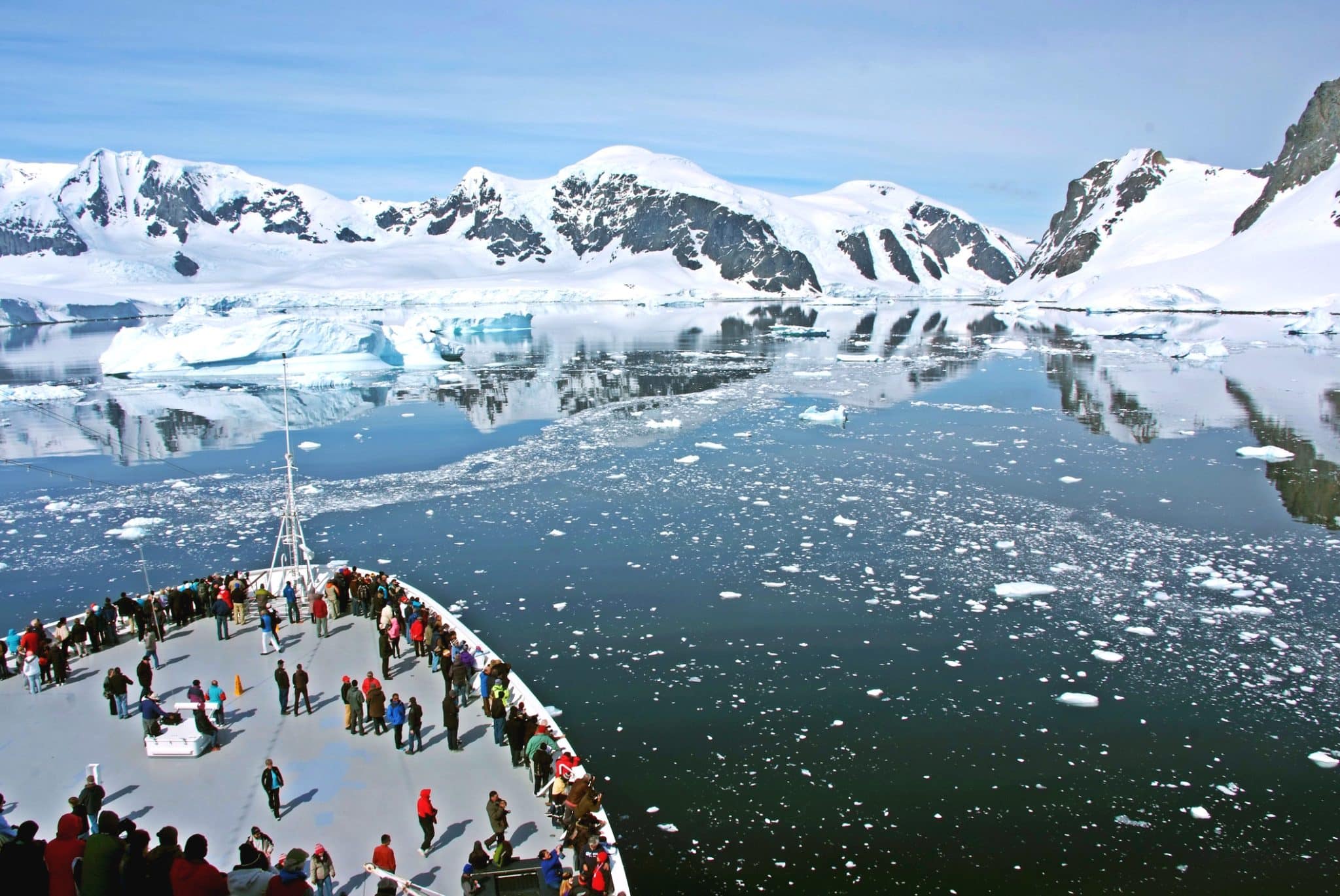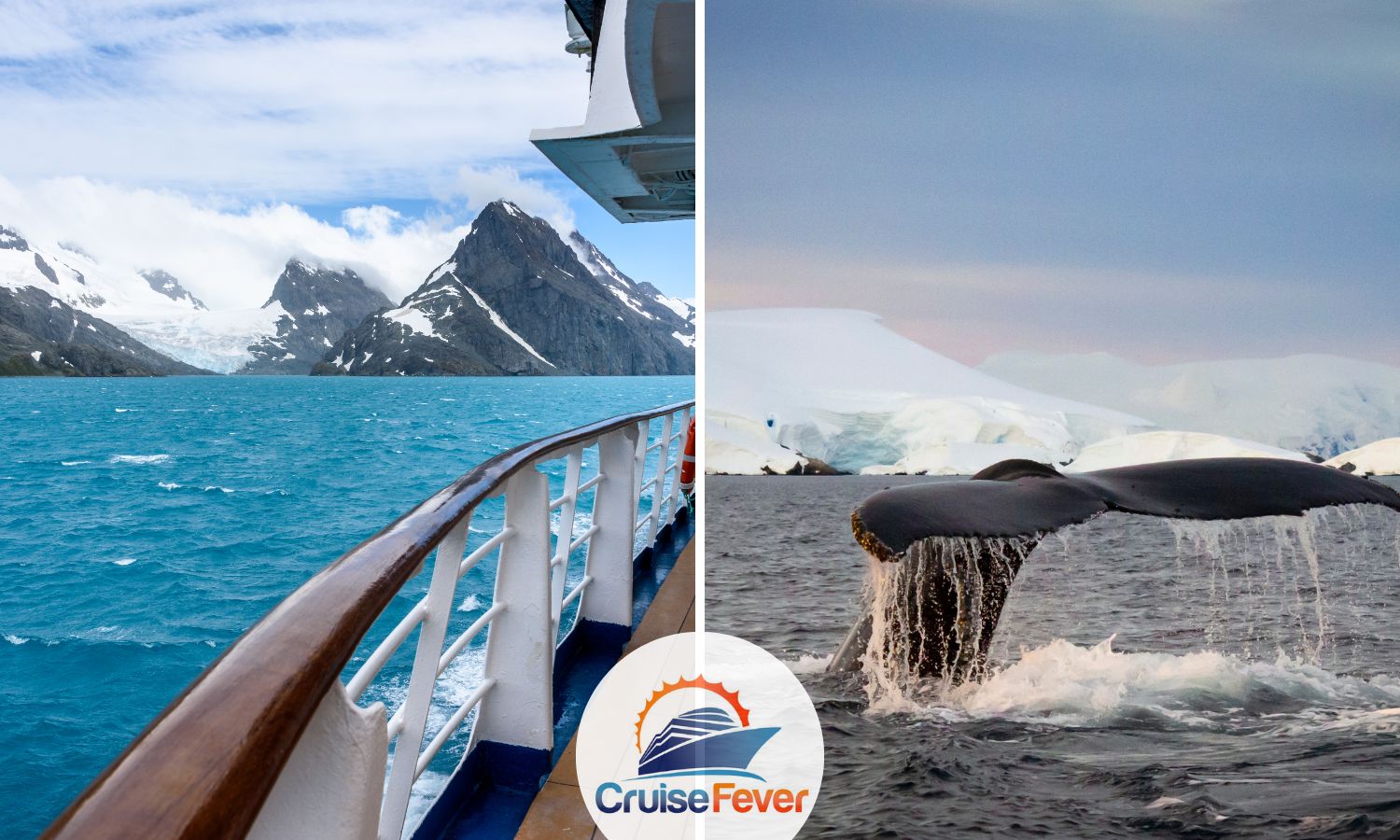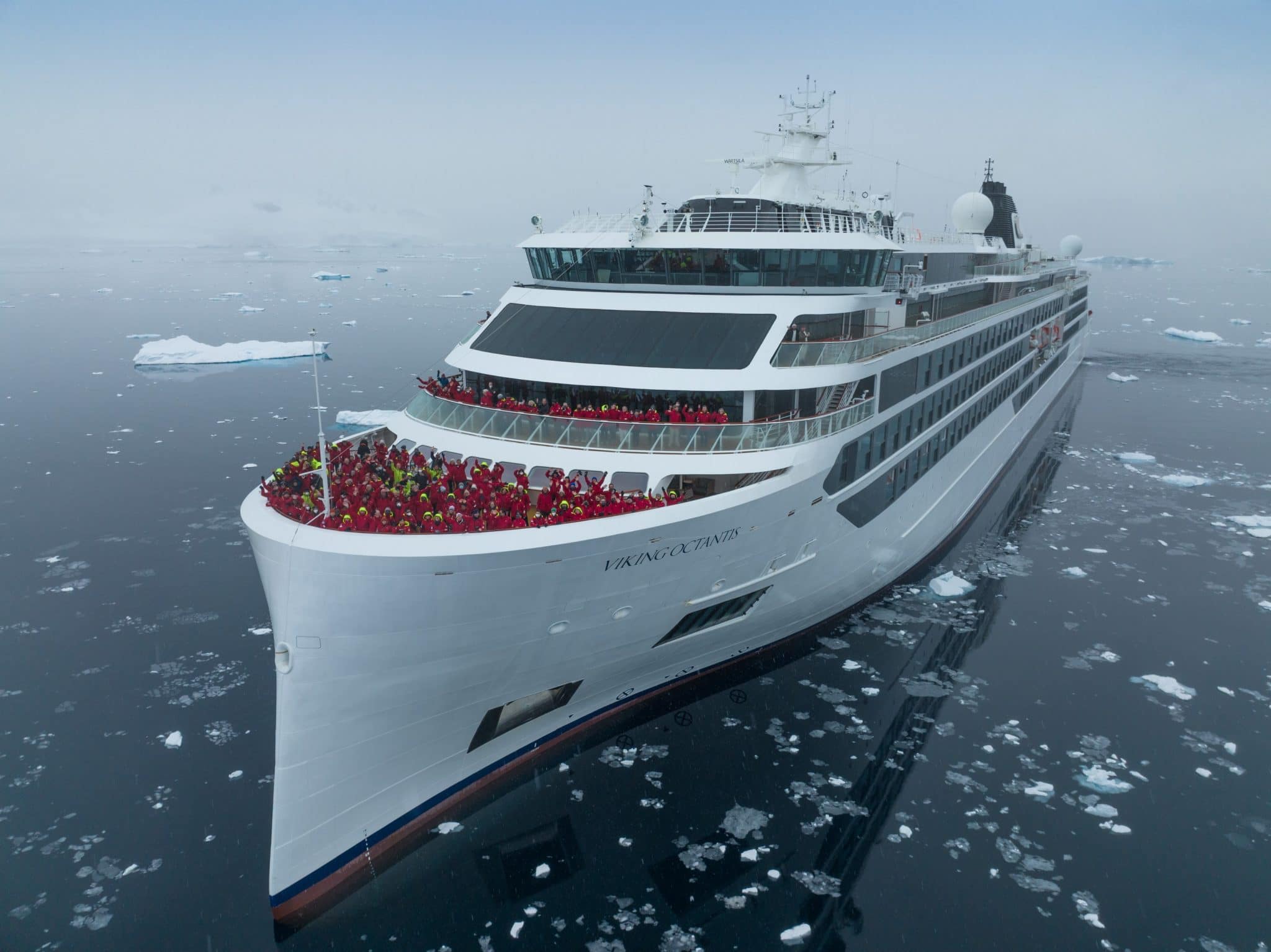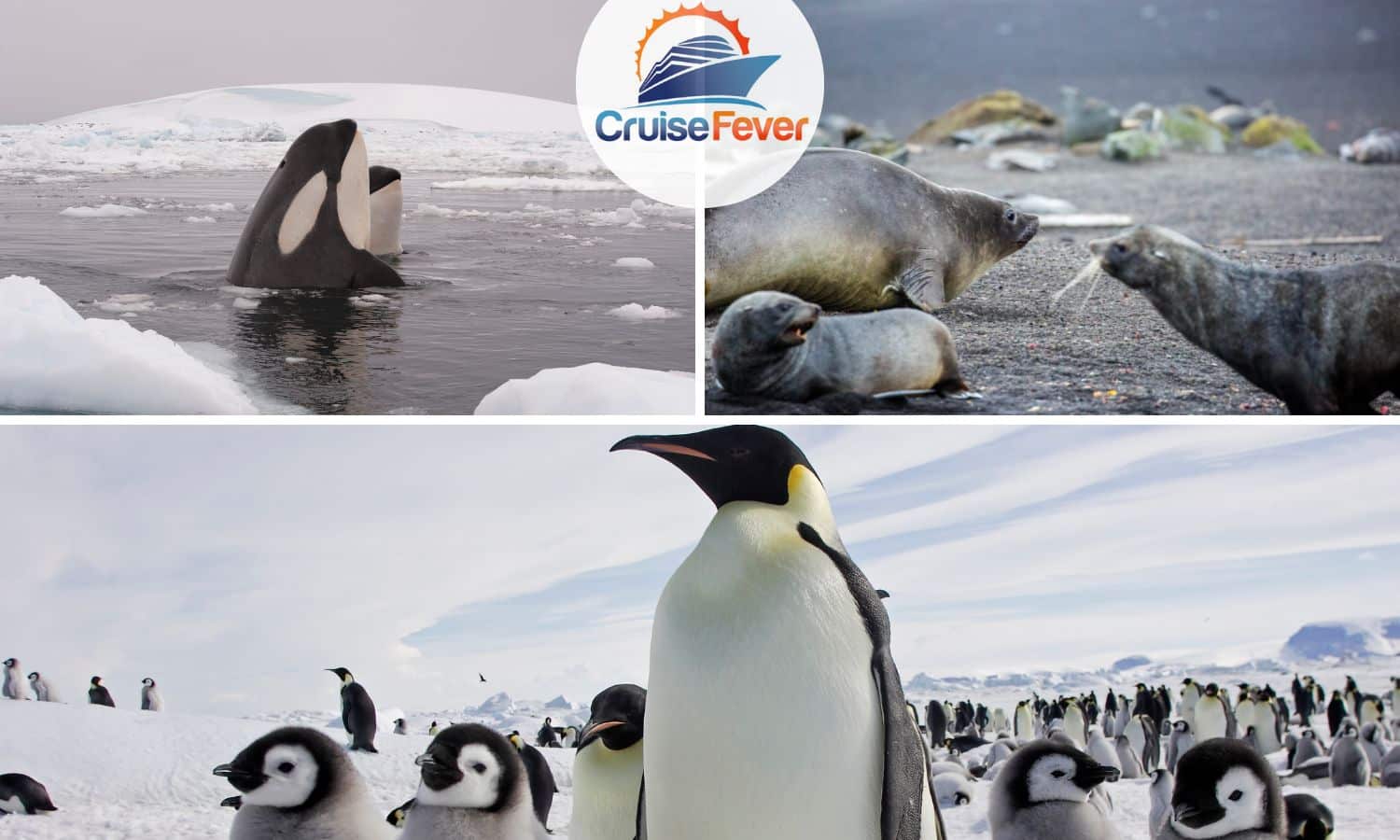Antarctica is one of the most remote and pristine places on Earth, and an Antarctica cruise to this icy, polar continent is an adventure like no other.
But there are some things you should know before you sail to this incredible place.

Whether you’re a wildlife enthusiast, an explorer who loves rugged landscapes and towering mountains, or just seeking a once-in-a-lifetime experience, a cruise to Antarctica is an incredible journey that requires careful planning and preparation.
A continent shrouded in mystery and intrigue, Antarctica is one of the most isolated regions in the world. As such, one of the best ways to visit Antarctica is on a cruise, where you can have an awe-inspiring and unforgettable experience with the comfort and ease of a luxury ship.
However, before embarking on such an adventure, there are a number of things you should be aware of to ensure that your trip is both safe and enjoyable.
A cruise to Antarctica is undoubtedly a once-in-a-lifetime experience, but it can also be a significant financial investment, so it is important to consider the cost and logistical implications to ensure that you are able to fully enjoy the experience.
Below we will discuss 9 things you should know so you can have the best Antarctica cruise imaginable.

1. The best time to go to Antarctica
Antarctica has a short cruising season that runs from late October to March, with the peak season being December to February. During this time, the ice has melted enough to allow ships to navigate around the continent, and the weather is mild enough to make it possible to disembark and explore.
Fortunately, cruises run during Antarctica’s summer months, so the conditions are as calm (and warm!) as possible. During this time, the weather is relatively mild and the days are longer, which allows for more time to explore the region.
Regardless, Antarctica is a harsh and unforgiving environment, and the weather can be incredibly unpredictable. It is important to plan your trip carefully to ensure that you are traveling during the best possible weather conditions.
The cost of a cruise to Antarctica can also vary depending on the time of year you choose to travel. The peak season, December to February, is often the most expensive time to travel, while the shoulder seasons, October to November and March, may offer more affordable options.
You also may want to consider your preferred wildlife sightings when choosing the best time to travel. One of the perks of traveling to Antarctica in October is that you get to see the start of the penguins’ mating season, although you will have to push your way past some sea ice near the Antarctic Peninsula.
In November, the ice breaks up, forming gorgeous icebergs and sculptures. Wildflowers in the Falklands are in bloom, and seals begin their breeding season.
December is also an excellent time to visit because it’s the peak of the breeding season for penguins, and there’s plenty of activity on the beaches. December is also the busiest time for cruise travel, so if you want to visit at this time, be sure to book well in advance.
February to March is the best time to see humpback whales, sperm whales, and orca whales fill the Antarctic seas and can be easily spotted from aboard cruise ships.
2. Choosing the right cruise
Choosing the right cruise is crucial when it comes to a trip to Antarctica. There are various types of ships that sail to Antarctica, ranging from small expedition ships with expedition teams to larger, more luxurious vessels. Small ships are better for exploring more remote locations, while larger ships can offer more amenities and comfort.
When planning your trip to Antarctica, it is important to choose a reputable tour operator. Look for operators that have experience in the region, and that prioritize safety and environmental responsibility.
While a more reputable operator may charge a higher price, it can be worth the extra expense for the added peace of mind and quality of service. It is also important to read reviews and seek recommendations from other travelers before making a decision.
Below is a brief description of 12 major reputable tour operators and their Antarctic offerings for 2023 and beyond:
- Azamara Cruises: Offers an Antarctic cruise leaving from Buenos Aires, Argentina, that takes guests on a 21-day journey, including visits to the Falkland Islands, South Georgia, and the Antarctic Peninsula. The itinerary includes activities such as wildlife viewing, kayaking, and zodiac tours.
- Celebrity Cruises: Offers two different 14-day Antarctic cruise itineraries, both leaving from Buenos Aires, that take guests on an immersive journey through the region. Both cruises include visits to popular South American ports and the Antarctic Peninsula, as well as opportunities for wildlife viewing and exploring the glaciers.
- Holland America Line: Offers a 22-day Antarctic cruise that takes guests on a comprehensive tour of the region, including visits to the Falkland Islands, South Georgia, and the Antarctic Peninsula. The itinerary includes activities such as wildlife viewing, kayaking, and zodiac tours, as well as overnight stays in each port.
- Hurtigruten: Offers a 21-day Antarctic cruise that takes guests on a journey through the region, including visits to the South Shetland Islands and the Antarctic Peninsula. The itinerary is geared towards the adventurous cruiser, including activities such as hiking, camping, and lectures on wildlife.
- Lindblad Expeditions: Offers six Antarctic cruise itineraries that range from 14 to 35 days on these National Geographic Expeditions. These cruises take guests on an in-depth exploration of the region, including visits to the Falkland Islands, South Georgia, and the Antarctic Peninsula. Depending on your cruise choice, the itinerary includes adventurous activities such capturing photos with National Geographic Photography Experts and cross-country skiing.
- Norwegian Cruise Lines: Offers a 20-day Antarctic cruise that takes guests on a journey through the region, including visits to Deception Island, Elephant Island, and the Falkland Islands.
- Oceania Cruises: Offers a 24-day cruise that takes guests on a journey largely around South America, but with a stop in Antarctica. This cruise is a great choice for passengers who are not yet sure if they would enjoy Antarctic antics.
- Princess Cruises: Offers a 16-day and 34-day Antarctic cruise that takes guests on a journey through the region, including visits to Elephant Island, the Antarctic Sound, and Gerlache strait. The 16-day cruise leaves from Buenos Aires, Argentina, and the 34-day cruise leaves from Los Angeles, California, each with a slightly different itinerary of South America.
- Regent Seven Seas: Offers a 24-day Antarctic luxury cruise that leaves from Rio de Janeiro, Brazil, and ends in Santiago, Chile, taking guests on an immersive journey through Antarctica and South America, including visits to Argentina, Uruguay, and the Antarctic Peninsula.
- Seabourn: Offers 21, 47, 53, and 80-day Antarctic cruises that take guests on a comprehensive tour of the region, including visits to the Falkland Islands, South Georgia, and the Antarctic Peninsula. The itinerary includes activities such as wildlife viewing, digital photography workshops, and zodiac tours.
- Silversea: Offers an 18-day Antarctic cruise that takes guests on a journey through the region, including visits to the South Shetland Islands and the Antarctic Peninsula. Silversea also offers an Antarctica Bridge Package, which allows passengers to fly to the heart of Antarctica rather than sailing the notoriously rough Drake Passage.
- Viking: Offers expedition cruises to Antarctica ranging from 13 to 71 days that take guests on a journey through the region, including visits to the South Shetland Islands, Cape Horn, and the Antarctic Peninsula. Viking also offers complimentary flights to the cruise port. The itinerary includes activities such as wildlife viewing, kayaking, and zodiac tours.

3. The cost
A trip to Antarctica is undoubtedly a significant investment, and it’s essential to factor in all the costs when planning your trip. You’ll need to consider the cost of the cruise itself, as well as flights, travel insurance, visas, and any additional activities you plan to do on the trip.
The cost of a cruise to Antarctica can vary greatly, depending on the length of the trip, the size of the ship, and the level of luxury offered.
The cost of the cruise itself is likely to be the most significant expense associated with a trip to Antarctica. The price of the cruise can vary widely depending on the operator, the length of the cruise, and the level of luxury and amenities provided.
On average, you can expect to pay between $5,000 and $15,000 per person for a 10 to 14-day cruise to Antarctica. However, it is possible to find cheaper or more expensive options depending on your preferences and budget.
In addition to the cost of the cruise itself, there may be additional expenses to consider. This can include flights to and from the embarkation port, travel insurance, visa fees, and any pre- or post-cruise accommodation.
Some cruise lines offer discounted rates or free flights to your cruise port, but this may come with a more expensive per-passenger cruise rate. Therefore, it is important to factor in these additional costs to ensure that you have a realistic understanding of the total cost of the trip.

4. The weather
Antarctica is known for its extreme weather conditions, and it’s essential to be prepared for all types of weather. The temperature can range from below freezing to just above freezing, so it’s important to bring warm, waterproof clothing, including gloves, hats, and jackets.
The weather can change quickly, so it’s essential to be prepared for sudden changes in conditions.
However, almost all Antarctic voyages leave from tropical areas in South America in the heat of summer. This can make a trip to Antarctica difficult to pack for, so be prepared to dress for a range of temperatures and activities.
Additionally, you’ll want to consider what on-board activities your selected cruise line offers (e.g., formal nights, exercise classes, etc.) and pack for those, too.
5. Wildlife and the environment
Antarctica is a unique environment, and it is important to travel in a responsible and sustainable manner. This includes adhering to all environmental regulations, avoiding disturbing wildlife, and minimizing your impact on the environment.
Antarctica is home to a wide variety of wildlife, including penguins, seals, elephant seals, orcas, humpback whales, and seabirds. If you’re a wildlife enthusiast, a trip to Antarctica is an incredible opportunity to see these animals in their natural habitat.

There are several types of penguins that can be found in Antarctica, including Emperor penguins and King Penguins. Rockhopper penguins are easily recognized by the unique “hairstyle” that waves in the breeze.
It’s important to remember that these animals are wild and should be treated with respect. It’s essential to follow the guidelines set by your cruise guides to avoid disturbing the wildlife.
It is important to consider the environmental impact of your Antarctica trip, and whether the operator you choose prioritizes sustainability and responsible tourism.
6. The activities
A trip to Antarctica offers a wide range of activities, including wildlife watching, hiking, kayaking, and even camping. It’s essential to consider which activities you’re most interested in and to choose a cruise that offers compatible excursions.
Some activities require a higher level of fitness than others, so it’s important to be realistic about your abilities to avoid potential injury. Potential Antarctic activities include:
- Zodiac tours: These inflatable boats take passengers on excursions to explore the coastline and nearby islands, and provide opportunities to see wildlife such as penguins, seals, and whales up close.
- Kayaking: Many cruises offer guided kayak tours to explore the Antarctic waters and get a closer look at the icebergs, glaciers, and wildlife.
- Hiking: Guided hikes are a popular activity for those who want to explore the rugged Antarctic terrain, including walks to glaciers, ice fields, and scenic overlooks.
- Wildlife viewing: Visitors can expect to see a variety of animals on an Antarctic cruise, including penguins, seals, whales, and seabirds.
- Lectures and educational programs: Many cruises offer onboard lectures and educational programs to provide a deeper understanding of the region’s history, geology, and wildlife.
- Photography: Antarctic cruises offer breathtaking photo opportunities, with stunning landscapes, wildlife, and dramatic lighting.
- Camping: Some cruises offer the opportunity to camp on the continent itself, providing a truly unique and unforgettable experience.
Many cruises to Antarctica offer a range of excursions and activities, such as kayaking, snowshoeing, and wildlife watching. While these activities can enhance your experience, they can also add to the overall cost of the trip. It is important to consider which activities you are most interested in, and whether they are worth the additional expense.
7. Health and safety
A trip to Antarctica is an adventure, but it’s important to remember that it can also be dangerous. It’s essential to follow the guidelines set by your cruise line and to be aware of the risks associated with the activities you plan to do. Before sailing, be sure that you have adequate travel insurance and have brought all of your necessary medications on board.
Antarctica is a remote and isolated region, and as such, it is important to be in good health before embarking on a cruise. You should consult with your doctor before traveling to ensure that you are fit to travel and be aware of the risks associated with the harsh environment.
Safety is of the utmost importance when traveling to Antarctica. It is important to be aware of the risks and take all necessary safety precautions while on your voyage. This includes wearing appropriate clothing, carrying emergency supplies, and following the advice of your cruise operator and expedition leader.
8. Tips on Packing for an Antarctica Cruise
Packing for an Antarctica cruise is different than for other types of cruises. You will be traveling to one of the harshest and coldest environments on the planet. Being properly prepared will ensure that you have a safe, comfortable, and enjoyable trip. Antarctica’s climate can be extremely harsh, with temperatures ranging from -20°C to 5°C, and strong winds, snow, and ice.
It is crucial to have appropriate clothing and gear to keep you warm, dry, and protected from the elements. Packing the right clothing, such as layers, waterproof jackets and pants, warm hats, gloves, and scarfs, will help keep you warm and dry while you explore the region.
Also, it’s important to have the right equipment for activities such as hiking, camping, and kayaking. Waterproof boots, backpacks, and camera cases will help protect your gear from the harsh weather conditions.
In addition, packing the right medication, such as seasickness tablets and any prescription medicines, is important to ensure your health and safety during the trip.
Here are some packing items and ideas in greater detail that will help you know what to throw into your suitcase.
Layers: Dress in layers as the temperature can change rapidly in Antarctica. Bring thermal underwear, fleece jackets, waterproof pants, and a windproof jacket.
Accessories: Bring a warm hat, gloves, and a scarf to protect yourself from the cold. Also, pack sunglasses, sunscreen, and lip balm with SPF to protect against the intense sun rays.
Waterproof gear: A waterproof backpack, camera case, and dry bags are essential to keep your belongings dry while on shore or while taking a Zodiac ride.
Footwear: Bring waterproof boots that are suitable for walking on snow and ice. You can also rent boots on the ship if you don’t have your own.
Medications: Pack medications for seasickness, as the Drake Passage can be rough. Also, bring any other necessary medications you might need.
Camera equipment: Antarctica offers fantastic opportunities for photography. Bring a good camera with a zoom lens, spare batteries, and memory cards.
Other items: A water bottle, travel adapter, and a power bank can be useful during your trip.
9. Most common ports of departure for Antarctica cruises
- Ushuaia, Argentina: Often referred to as the “Gateway to Antarctica,” Ushuaia is the southernmost city in the world and the most popular starting point for Antarctica cruises. It’s located in Tierra del Fuego, Argentina, and has a small port with frequent departures to Antarctica.
- Punta Arenas, Chile: Another popular starting point for Antarctica cruises, Punta Arenas is located in the southernmost part of Chile and offers easy access to the Drake Passage, which is the main route to Antarctica.
- Puerto Williams, Chile: Located on Isla Navarino in southern Chile, Puerto Williams is the southernmost town in the world and offers access to Antarctica via the Beagle Channel.
- Buenos Aires, Argentina: Buenos Aires is another popular starting point for some Antarctica cruises, particularly for those departing from South America. While it’s not as common as Ushuaia or Punta Arenas, Buenos Aires has a large port with many international cruise operators offering departures to Antarctica during the summer months.
Final Thoughts
A trip to Antarctica is undoubtedly a significant financial investment, but it is also a once-in-a-lifetime experience that can be well worth the expense. By considering these cost considerations and planning your trip carefully, you can ensure that you have a memorable and enjoyable cruise as you explore Antarctica.
Looking for the Best Cruise Deals?
Search Multiple Sites at Once
Instant Real Time Pricing
Search Now



